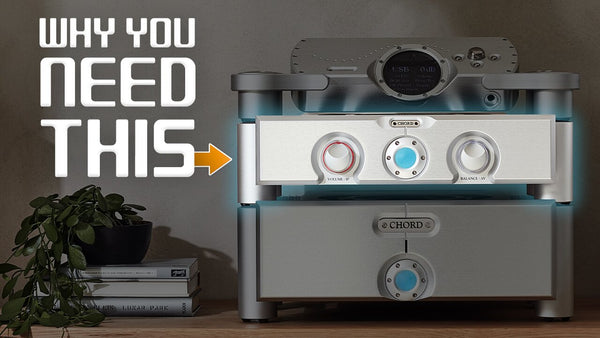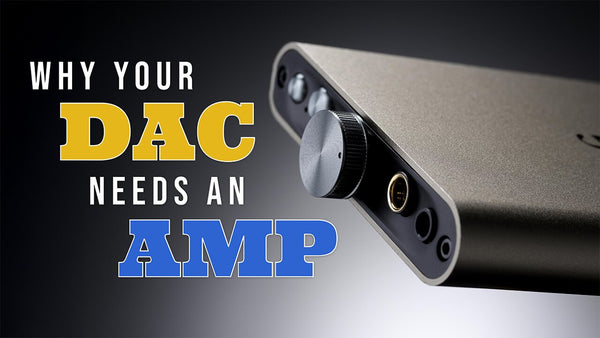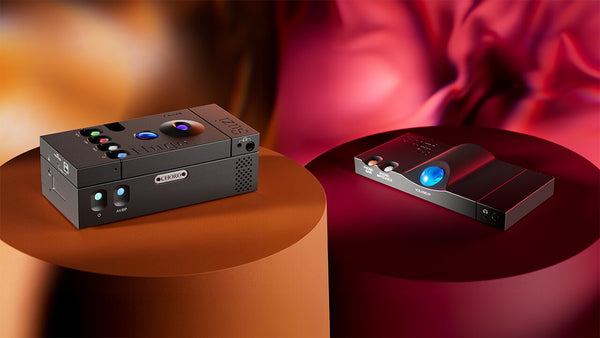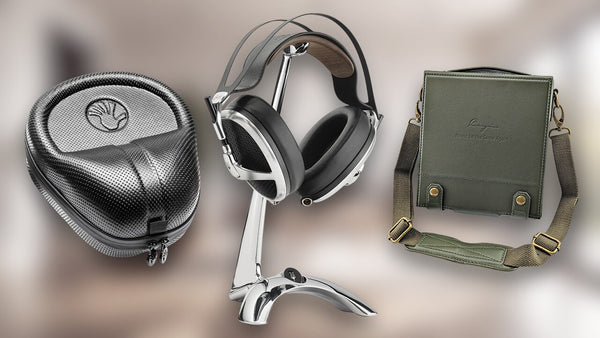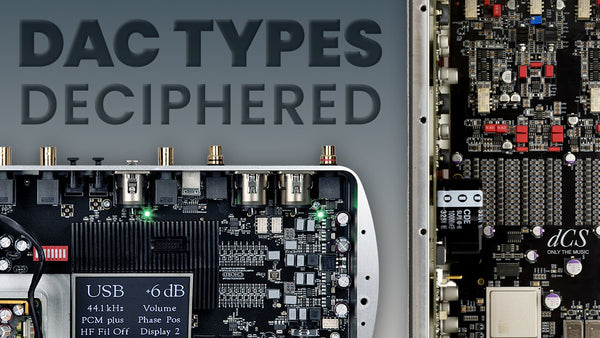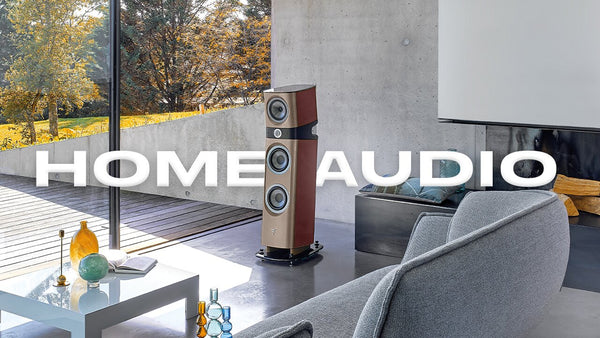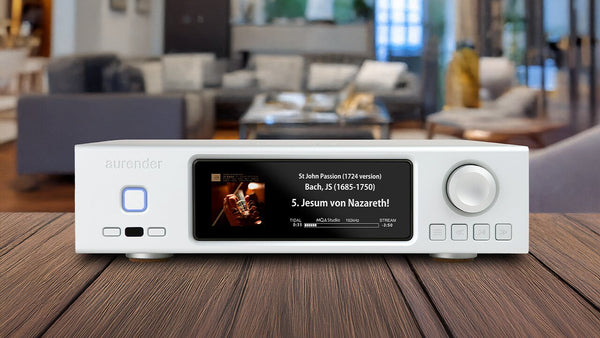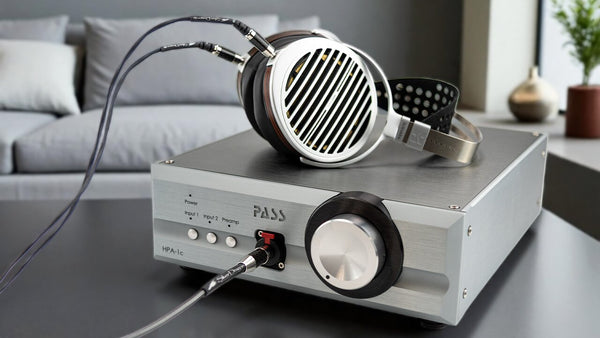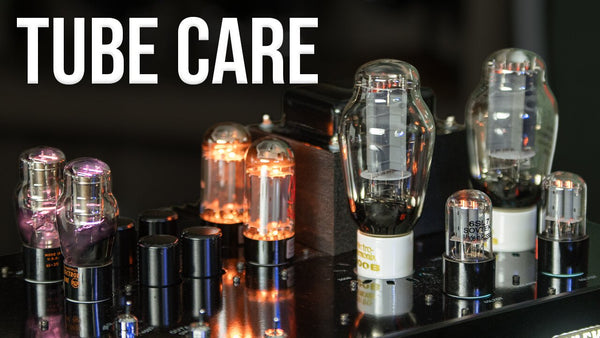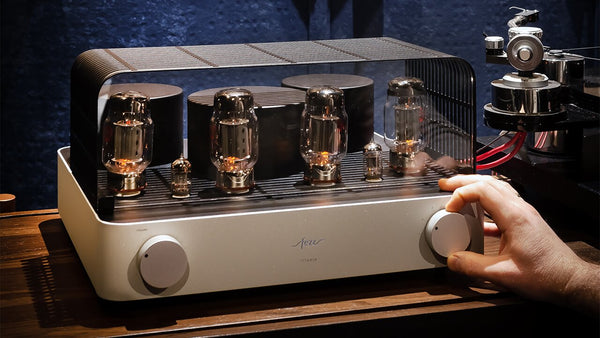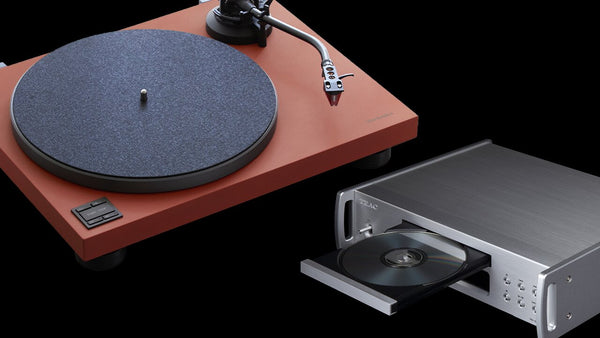The Best DACs and Amps for Audiophile-Grade Speakers

TL;DR: Unlock your audiophile speakers' full potential with the right external DAC and amplifier. This guide covers how digital-to-analog converters and power amps elevate sound quality, offer customization, and enhance detail, especially for passive setups.
- What a DAC for speakers does and why it matters
- Why audiophiles prefer external DACs and amps
- Key benefits: fidelity, noise reduction, and clarity
- Signs your system needs an upgrade
- How to match DACs and amps to speakers (impedance, sensitivity, tonal character)
- Special considerations for passive speakers
- Top DACs and amplifiers from Moon Audio, with “best for” pairings
- Explore Moon Audio’s curated DAC collection
When you invest in audiophile-grade speakers, it’s because you want to achieve the clearest, most detailed sound possible. If your speakers aren’t producing the high-fidelity sound you crave, you may need to upgrade your setup.
What gear do you need to make the most out of your high-end equipment?
One crucial component often overlooked in audiophile-grade setups is the DAC (Digital-to-Analog Converter). A DAC for speakers is responsible for converting digital audio signals into analog signals. Pairing a dedicated DAC for speakers with the right amplifier can significantly elevate your listening experience. Ultimately, your setup will deliver crystal-clear sound, reduced noise, and heightened detail.
In this blog, we'll explore how DACs and amplifiers transform your audio setup. We’ll share the keys to unlocking unparalleled audio fidelity that truly brings your music to life. Plus, read until the end to find our top recommendations for the best DACs and amplifiers available today! Your ears will thank you.
Understanding the Role of DACs and Amplifiers
A DAC for speakers (Digital-to-Analog Converter) is a critical component in any high-fidelity sound system. It transforms digital audio signals into analog signals.
Speakers can only physically reproduce analog signals as sound. That means that without a DAC, digital audio files would remain incomprehensible to traditional audio hardware. Examples of digital audio signals include those from computers, smartphones, and streaming devices.
Modern digital files are encoded at high resolutions. The highest-performing, audiophile-grade DACs ensure these signals are converted with minimal loss. In other words, they help maintain the integrity of your music.
A high-end DAC can unlock layers of detail, tonal richness, and spatial accuracy. Built-in solutions often can’t deliver that level of high-fidelity audio.
In contrast, an amplifier for speakers is responsible for increasing the power of the analog signal. This is crucial so that it can drive your speakers to listenable, enjoyable volumes. In essence, an amplifier ensures that the detailed signal coming from your DAC is delivered with authority and control.
You need both a DAC and an amplifier for speakers to achieve true audiophile-grade sound.
Why Audiophiles Choose External DACs and Amplifiers
Some systems combine the DAC and amplifier into a single device. These are called integrated amplifiers with built in DACs. While convenient, they often involve compromises in sound quality, signal isolation, and upgrade potential. Casual listeners can get by with a DAC/amp combo, but audiophiles shouldn’t have to.
In general, audiophiles typically prefer separate components, including standalone DACs, amplifiers, preamplifiers, and streamers. Why? This modular approach maximizes performance and offers extra flexibility for future upgrades.
Here are a few other reasons why audiophiles almost always favor separate components over integrated DAC/amps:
- Improved audio fidelity. Separate components eliminate jitter, reduce unwanted artifacts, and ensure a pure digital-to-analog conversion.
- Reduced noise and distortion. Separate components contribute less electrical noise and lower total harmonic distortion (THD), allowing details to shine.
- Enhanced detail and dynamic range. Separate components dramatically expand the difference between the quietest and loudest sounds, adding an extra layer of fidelity.
- Customization and flexibility in audiophile-grade setups. With separate components, you can select gear that complements the unique sonic signature of your speakers and listening preferences. Modular setups evolve with you rather than forcing you to settle for quality that’s just passable.
In other words, if you plan to grow your setup over time, separate components are crucial. Built-in DACs and amps will never achieve the detail and fidelity you crave and deserve.
Key Benefits of Adding a DAC for Speakers
Here’s why you need a DAC for speakers to achieve a truly high-fidelity audiophile setup.
Precise Digital Audio Conversion for High-Quality Analog Signals
The fundamental role of a DAC is to convert digital signals into analog waveforms. High-end DACs handle this process with extreme accuracy and can reduce jitter and digital artifacts.
As a result, you will hear more of what was recorded. You’ll also hear less noise that wasn’t intended to be part of the listening experience. The result is a crystal-clear, accurate listening experience.
Enhanced Sound Clarity and Detail
With external DACs, audiophiles can reduce electrical interference from other components in their device. For example, power supplies or CPUs. You should notice an improvement in detail retrieval, revealing new details in familiar recordings.
Basically, external DACs can breathe new life into old favorites. It’s like hearing your favorite music for the first time.
When Should You Consider an External DAC and Amplifier?
If you rely on the built-in DAC in your source, you may be limiting your audio quality without realizing it. Internal components come with limitations that translate to flat soundstages, muddied detail, and elevated noise floors.
If you’re craving a cleaner, more faithful signal, it’s time to consider an integrated amplifier with a built in DAC or an external dac with your speakers. You’ll also want to add an external amp to your setup for the best possible sound.
But is your built-in DAC the problem? Common symptoms of a suboptimal front-end setup include:
- A lack of genuine emotional engagement and connection with the music you love.
- Unstable stereo imaging or collapsed soundstage that makes audio feel flat.
- Audible background hiss or distortion that distracts you from the details.
- Volume limitations without clarity that make tracks feel muddy.
An upgrade to external gear creates a more accurate and immersive listening experience. You’ll experience higher-resolution audio support and better isolation.
Importance of Pairing the Right DAC and Amplifier
DACs are the translator for your music. The DAC converts the digital signal to an analog signal to your amplifier or integrated amplifier to deliver the music to your speakers.
DACs offer different flavors of sonic signatures so choosing the right DAC for the type of music you listen to and for you personal sonic preferences can lead to an incredible listening experience and help you find your personal audio nirvana. There is no right or wrong sound signature with choosing a DAC and there are simply personal preferences.
Only complementary components produce the harmonious sound you crave.
How to Choose the Right DAC and Amplifier Combo
The right pairing of DAC and amplifier for speakers enhances their natural performance. It should also line up with your personal listening preferences. How do you ensure you’re matching DACs and amplifiers to your speakers?
First, you need to understand what your audiophile-grade speakers require in order to perform at their best.
Consider Impedance and Sensitivity
All speakers have unique impedance and sensitivity ratings. These ratings determine how much power the speakers require and how easily they can be driven.
Essentially, Impedance + Sensitivity = Amplifier Strategy.
Impedance is measured in Ohms (Ω). Most speakers are rated at 4, 6, or 8 ohms, with 8 ohms being the most common. Lower impedance means the speaker allows more electrical current to flow through it. In contrast, higher impedance restricts current flow.
Always make sure your amp can handle the speaker’s impedance load. It is often listed in the amp’s specs. For example, it might say, “rated for 4-8 ohms.”
Sensitivity is measured in dB at 1W/1m. It’s a measurement of how efficiently a speaker converts amplifier power into sound. High sensitivity means the speaker plays loudly with less power. Low sensitivity requires more amplifier power to achieve the same volume.
Knowing these numbers ensures you avoid underpowered or mismatched setups.
Factor in Tonal Character
Additionally, different speakers have different tonal characters (sometimes referred to as their sonic personality). You need to pair your speakers with a DAC that complements their character, bringing out the clarity and texture. Audiophiles refer to this as “tuning” their system.
Tuning is subjective and generally a matter of personal preference. However, there are some guidelines that can help you get it right:
- Bright or Forward Speakers: Warm or neutral DACs and Class A or tube amplifiers.
- Warm or Laid-Back Speakers: Neutral or analytical DACs and Class AB or Class D amps.
- Neutral Speakers: Transparent DACs and amplifiers.
- Bass-Heavy Speakers: DACs with excellent low-end control and high-dampening factor amps.
- High-Resolution or Analytical Speakers: Musical, slightly warm DACs and amps.
If you’re unsure of your speaker’s tonal profile, look for frequency response measurements as a reference point.
Special Considerations for Passive Speakers
Unlike active speakers, which have built-in amplifiers, passive speakers rely entirely on external components to function. They’re a favorite among audiophiles for their flexibility, tonality, and upgrade potential. However, you must supply a separate amplifier to power them. Additionally, pairing them with a dedicated DAC helps ensure accurate signal conversion.
Yes, it can be a little more complex to get your passive speaker setup perfect. However, you gain complete control over every stage of your audio signal chain. In general, passive speakers are an audiophile favorite for that reason.
Here's what you need to know about choosing the right power amp for passive speakers and the best DAC amp for passive speakers.
Importance of a Power Amp for Passive Speaker
Passive speakers don’t amplify sound themselves. That means they need a power amplifier that delivers sufficient wattage to drive them effectively.
Choosing the right power amp for passive speakers involves:
- Matching impedance and power output to the speaker’s requirements.
- Ensuring headroom to avoid distortion at high volumes.
- Selecting the right amplifier class - Class A for warmth, AB for balance, or D for efficiency.
A mismatched or underpowered amp can lead to dull dynamics. It may even cause long-term damage to your speakers.
Choosing a DAC and Amp for Passive Speakers
A dedicated DAC amp for passive speakers should offer:
- Precision signal conversion with low jitter and high SNR (signal-to-noise ratio).
- Analog outputs compatible with your chosen power amplifier.
- Scalability so you can easily upgrade your amp or DAC later on.
Audiophiles typically choose to separate their DAC, preamp, and power amp entirely. As discussed, separate components will almost always deliver better sound output and result in a better sonic experience.
Top Recommendations: Best DACs and Amplifiers from Moon Audio
Choosing the right DAC and amplifier isn’t overwhelming with expertly curated gear from Moon Audio. Below are some of the best-performing products in their respective categories, trusted by audiophiles around the world.
Best DACs for Speakers
A reference-class DAC for speakers with network streaming capabilities and an open, dynamic sound signature.
Best for: Reference-grade setups with neutral or analytical speakers.
Compact and ultra-clean, the Qutest uses Chord’s proprietary FPGA tech for stunning detail and imaging.
Best for: Compact systems with bookshelf or high-sensitivity speakers.
MQA-ready and Roon-certified, this sleek DAC offers balanced outputs and a highly engaging sonic presentation.
Best for: Balanced setups with a modern sound signature.
Designed for discerning audiophiles, the M3 delivers rich tonality and a lifelike soundstage with studio-level accuracy.
Best for: Adding a warmth, musical and dynamic presentation for your speakers.
A powerhouse DAC for speakers and headphones alike, offering flagship-level performance in a compact form.
Best for: Dual-purpose setups for both headphones and speakers.
Best Amplifiers for Speakers
Combines finesse and excellent control, known for its rich Class A warmth and exceptional midrange.
Best for: Mid- to high-sensitivity speakers.
A pure power amp with remarkable resolution and control, ideal for full-range speaker systems.
Best for: Full-range floor-standing speakers needing dynamic punch and control.
A studio-proven workhorse revered for its neutral sonic signature and bulletproof reliability.
Best for: Neutral or studio-style speakers.
Class A purity in a minimalist design featuring low wattage and high musicality. Perfect for sensitive speakers.
Best for: Low-powered, high-efficiency speakers.
Cutting-edge Purifi Eigentakt technology with exceptional efficiency and ultra-low distortion.
Best for: Modern, high-resolution systems using passive speakers with lower sensitivity.
Elevate Your Listening Experience with Moon Audio
Explore our DAC collection for high-quality external or portable DAC/amp combos to elevate your audio setup. Whether for home, portable, or car use, our high-quality DACs deliver pristine sound clarity and enhanced audio fidelity.

